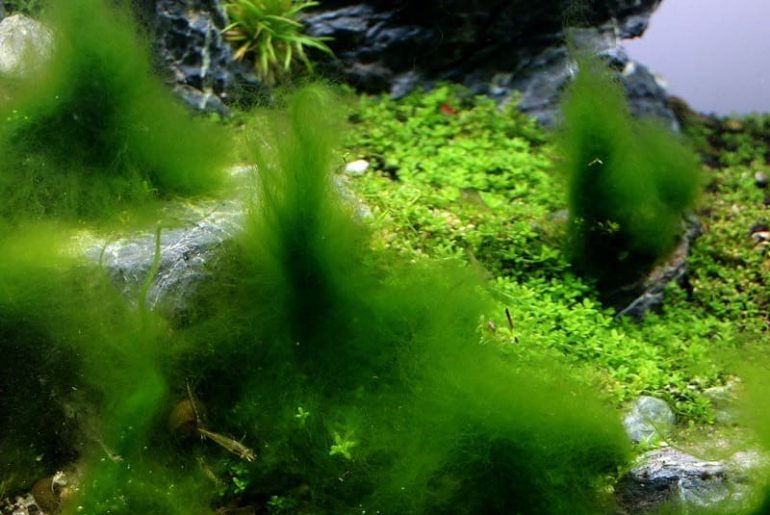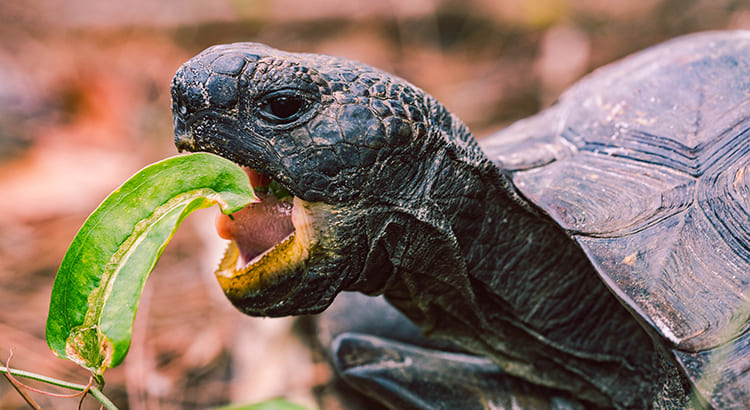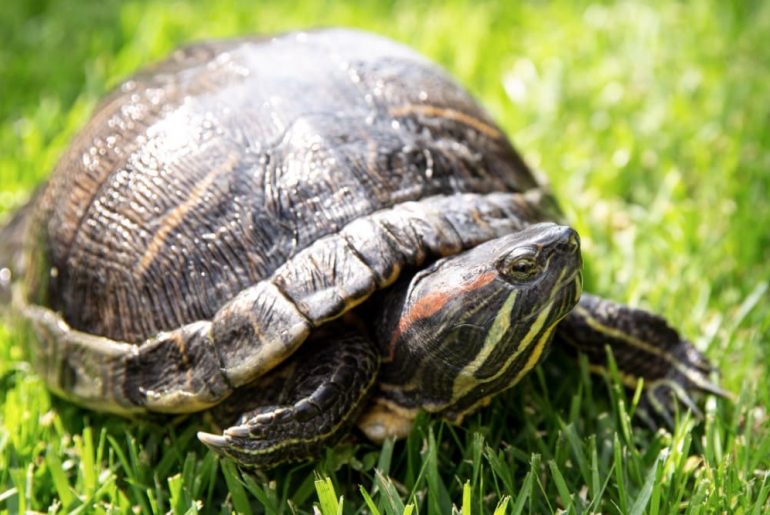The thread algae are one of the types of algae that are very widespread in our aquariums. It belongs to the family of green algae (Chlorophyta), which also includes hair algae, floating algae, and spot algae. Every aquarist has probably already housed one or the other form of green algae in their tank. Here we explain which factors cause the growth of filamentous algae, and how you can combat algae in the aquarium and prevent them from forming again.
Filamentous algae despite good water values
Green algae, including filamentous algae, use and need the same nutrients and trace elements in the aquarium as the aquarium plants that are deliberately introduced and cared for – from the aquarium owner’s point of view, this is unloved competition.
Filamentous algae only thrive poorly or not at all in tanks with nitrate values of 40 mg/liter or more. So their occurrence in the aquarium initially seems to speak for the quality of the water values. In fact, thread algae are often found in pools that have good water quality. However, algae are generally a sign of a disturbed balance in the aquarium.
That is why the apparent contradiction at first glance may surprise some people. However, the connection is as follows: the formation of thread algae is caused, among other things, by an oversupply of nutrients. As the algae grow, they use up these substances, so that when the aquarium owner discovers filamentous algae and tests the water parameters, they will find that they are “in the green”. It becomes clear: the problem is not the thread algae, but the factors that contribute to their well-being. Research into the cause is appropriate.
Conversely, this also means that combating filamentous algae is basically simple: if aquatic plants are encouraged to grow vigorously, the larger they grow, they use more and more of the previously excess nutrients – ergo there is less food for filamentous algae.
The best method if you want to permanently eliminate thread algae is to ensure good growth of the aquarium plants.
Reasons for the appearance of thread algae
Another possible reason for the appearance of thread algae can be the lighting. If it is too bright in the tank, if the lighting is too long or too long and too intense, or if the wrong light source is chosen, this can promote the growth of thread algae and other types of algae.
Water care also plays an important role: leftover food or dead plant parts that collect in the tank can degrade the water quality and promote the growth of thread algae.
This is how the growth of thread algae is promoted:
Inappropriate lighting
- too much light in the tank (too intense or long lighting, direct sunlight)
- unsuitable technology (HQI spotlights or outdated neon tubes)
Elevated nitrate or phosphate levels, caused by
- generous feeding
- dead plant debris
- too high stocking density
- fish droppings in the water
Combat thread algae and prevent their formation
The first step in combating thread algae is simple: you must first eliminate it manually, i.e. remove it by hand. Thread algae grow as a single thread on the edges of the leaves and can reach a length of more than 30 centimeters. They are relatively easy to remove by wrapping them around your finger or aquarium tweezers like a thread. It must then be ensured that they do not form again.
If you want to permanently get rid of the unloved subtenant thread algae, the parameters described above, such as water values and lighting, should first be examined. You can also find more tips in our article on algae in the aquarium.
- Check and, if necessary, reduce the lighting time, give your plants a “lunch break” without lighting and replace outdated neon tubes.
- If the pool is exposed to direct sunlight, the side facing the sun should e.g. B. can be darkened with adhesive film.
- Remove dead plant debris, check stocking density, fertilizer dosage, and your feeding habits. Less is often more here.
If the “with patience and spit” method did not lead to success and the elimination of the thread algae worked, but they settled back in, make sure that existing plants continue to grow through a targeted supply of trace elements. Due to the increased growth, your aquarium plants need significantly more nutrients, which are no longer available to the thread algae.
Algae-eating fish and shrimp for the aquarium
If stocking density and the type of fish kept so far allow it, Nanocheirodon insignis or flag cichlids – the only fish known to eat filamentous algae – can be used. Amano shrimp also feast on filamentous algae and other green algae (Chlorophyta). However, the shrimp only eat the 2-3 mm long, tender, young shoots and unfortunately also the leaves of various aquarium mosses.
Products to combat thread algae
- Dennerle S7 and Dennerle PlantaGold 7 – free from phosphates and nitrates, they promote plant growth
- Filament Algae Kill by Dennerle – activated oxygen (hydrogen peroxide), breaks down very quickly into water and oxygen. Simply sprinkle on the thread algae. Contains neither copper nor organic herbicides, is free of chemicals, and absolutely harmless.
- Algen-Ex by Aquality – without copper/other heavy metals, use over 4 weeks, increases plant growth/nutrient competition
- AlgExit from Easy Life – harmless to fish, shrimp, snails, or plants, use over 4 weeks
- Phosphate-Ex by Dennerle – a highly effective preparation to prevent algae by removing nutrients with lanthanum phosphate scavenger, long-lasting effect
- UV-C clarifier – emits germicidal UV-C radiation that does not change the water parameters and has no effect on the filter bacteria
You can find suitable products in our fertilizer category in our aquarium plant shop.
We hope that we were able to help you with our information and tips on thread algae and how to combat them. What are your experiences with thread algae? We are looking forward to your comments!











